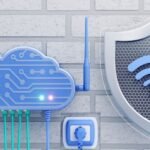In an increasingly digital world, personal data has become an asset. However, the more data we share online, the more vulnerable we become to privacy breaches and data misuse. Prioritizing data privacy is essential for safeguarding your personal information from unauthorized access and ensuring your online security.
Guide to Prioritize Data Privacy
This comprehensive guide will explore step-by-step tips for prioritizing data privacy and protecting your personal information.
Understand the Value of Your Personal Data
The first step in prioritizing data privacy is understanding the value of your personal data. Your data is more than just a collection of information; it’s a digital representation of you. It includes your personal details, financial information, and online behavior. Realize that your data is not just information but a valuable commodity that can be exploited if it falls into the wrong hands. Recognizing the worth of your data will motivate you to take proactive steps to protect it.
The value of personal data extends beyond financial worth. It encompasses your privacy, security, and even your reputation. Data breaches can lead to identity theft, financial loss, and emotional distress. By understanding the holistic value of your data, you’ll be more inclined to take data privacy seriously.
Educate Yourself About Data Privacy
To prioritize data privacy effectively, educate yourself about the basics of data privacy, online security threats, and common privacy practices. Understanding concepts like encryption, two-factor authentication, and data breaches will empower you to make informed decisions regarding your personal information.
Data privacy is a dynamic field that is constantly evolving as new technologies and threats emerge. Staying informed about the latest developments in data privacy is essential for making informed choices about protecting your personal information.
Review and Adjust Your Online Presence
Assess your online presence, including your social media profiles, email accounts, and other digital platforms where you share personal information. Review your privacy settings on these platforms and adjust them to limit the amount of data that is publicly accessible. Be mindful of what you share online and consider whether each piece of information is necessary and safe to disclose.
Your online presence plays a significant role in your data privacy. By carefully curating what you share and adjusting privacy settings, you can control who can access your personal information. Regularly reviewing and updating your online presence is an ongoing process.
Use Strong and Unique Passwords
Protect your online accounts with strong and unique passwords. Avoid using easily guessable passwords like “123456” or “password.” Instead, create complex passwords with a combination of letters, numbers, and special characters. Consider using a trusted password manager to generate and store your passwords securely.
Passwords are your first line of defense against unauthorized access. Strong and unique passwords prevent hackers from easily guessing or cracking them. Password managers can help you maintain high password security while simplifying managing multiple passwords.
Enable Two-Factor Authentication (2FA)
Enable two-factor authentication (2FA) whenever possible. 2FA adds an extra layer of security by requiring you to provide a second verification form, such as a one-time code sent to your mobile device and your password. This significantly reduces the risk of unauthorized access to your accounts, even if your password is compromised.
Two-factor authentication is an effective way to enhance the security of your online accounts. Even if someone obtains your password, they won’t be able to access your account without the secondary authentication method.
Be Cautious with Email and Messaging
Exercise caution when receiving emails or messages, especially those that request personal information or contain suspicious links or attachments. Be skeptical of unsolicited emails, and avoid clicking links or downloading attachments from unknown sources. Phishing attacks often use deceptive emails to steal personal data.
Email and messaging platforms are common vectors for cyberattacks. Be vigilant and verify the legitimacy of senders and the content of messages before taking any action.
Secure Your Devices
Protect your devices with strong passcodes, PINs, or biometric authentication methods like fingerprint or facial recognition. Keep your operating systems, apps, and antivirus software up to date to guard against security vulnerabilities. Encrypt your device’s storage to ensure that your data remains protected even if your device is lost or stolen.
Securing your devices is critical because they often contain personal information. Locking your device with a passcode or biometric method provides additional protection in case unauthorized individuals physically access it.
Regularly Update Software and Apps
Update the software and apps on your devices regularly to patch security vulnerabilities and ensure that they have the latest security features. Cybercriminals often exploit outdated software to gain access to personal data.
Software and app updates typically include security patches that address known vulnerabilities. Failing to update your software leaves your devices and data susceptible to exploitation.
Use Encrypted Communication
Prioritize encrypted communication methods, especially when sharing sensitive information. Encrypted messaging apps and services offer end-to-end encryption, ensuring that only the intended recipient can access the content of your messages. This is particularly important for sensitive discussions and data sharing.
Encryption ensures that your messages and data remain confidential during transmission. It adds an extra layer of security, making it extremely challenging for unauthorized parties to intercept or decipher your communications.
Monitor Your Financial Statements
Regularly monitor your bank and credit card statements for any unauthorized transactions. If you notice any suspicious activity, report it to your financial institution immediately. Many banks and credit card companies offer fraud protection services to help you in case of unauthorized charges.
Monitoring your financial statements is a proactive way to detect and promptly address potential fraud or unauthorized access to your financial accounts.
Protect Your Wi-Fi Network
Secure your home Wi-Fi network with a strong password and encryption. Change your router’s default login credentials to prevent unauthorized access. Regularly update your router’s firmware to patch security vulnerabilities.
Your home Wi-Fi network is a gateway to your connected devices and data. By securing it with a strong password and keeping your router’s firmware up to date, you can protect your network from unauthorized access.
Be Wary of Public Wi-Fi
Exercise caution when using public Wi-Fi networks. Avoid accessing sensitive accounts or sharing personal information while connected to public Wi-Fi, as these networks are often less secure and more susceptible to hacking.
Public Wi-Fi networks are typically open and can be compromised more easily than private networks. Use a virtual private network (VPN) to encrypt your internet connection and enhance your online security while using public Wi-Fi.
Conclusion
Prioritizing data privacy is not just a choice; it’s necessary in today’s digital landscape. Following these steps, you can proactively protect your personal information from unauthorized access and potential misuse. Remember that data privacy is an ongoing commitment, and staying informed about evolving threats and best practices is essential to maintaining online security and safeguarding your valuable personal data.












